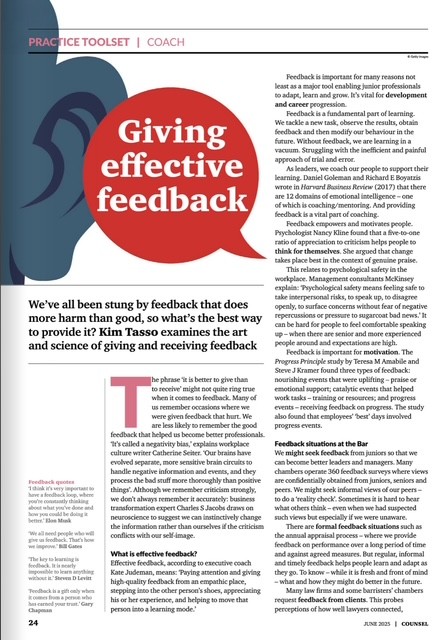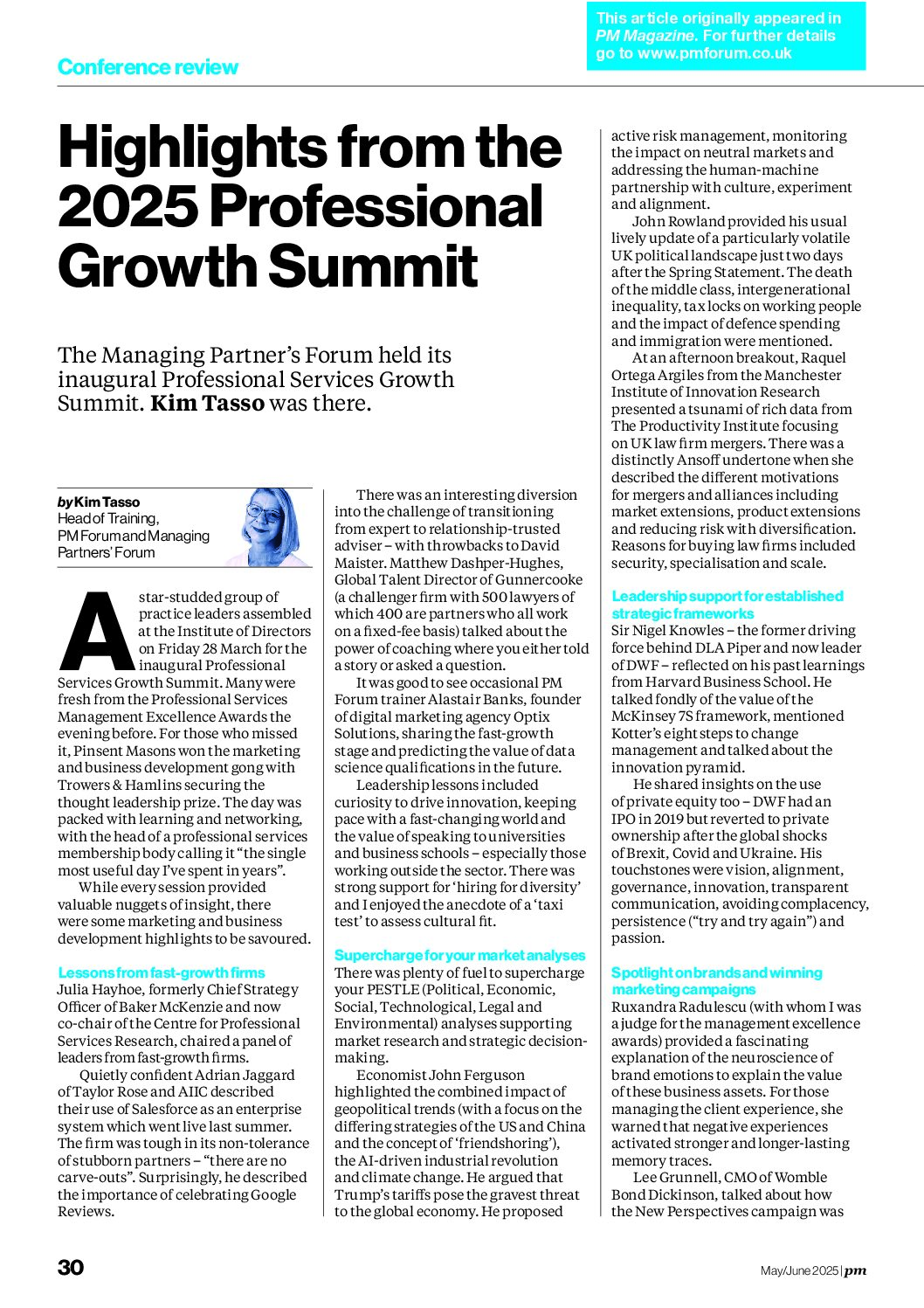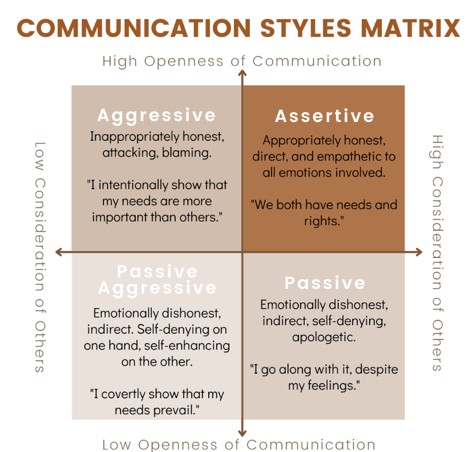In September, I facilitated a “Project and Campaign Management” training session for the Professional Marketing Forum (Details of future courses: http://www.pmforum.co.uk/training/) While the focus was on understanding the formal project management processes and how they apply in business development and marketing projects, we also considered the issues in terms of “Project vs Campaign Management”.
A project is:
- A sequence of tasks
- With a defined start and end date
- To achieve objectives within three critical success factors: Time, Budget and Results
There were plenty of examples of major projects that span beyond marketing and business development teams including: CRM systems, KAM initiatives, new product/service development and major change management. Business development and marketing often also have programmes – projects that reoccur such as annual events or quarterly index updates.
A campaign is similar
One key difference is that a major business development or marketing campaign – for example a strategic thought leadership positioning campaign – may contain a number of separate projects. For example, client analysis, market research, report development, content management, digital communications, a series of events and a programme of sales meetings.
Both project and campaign management involve:
- Careful analysis of the problem (or opportunity)
- Development of SMART objectives so that a business case can be built and results assessed
- Creation on a team including sponsors and specialists
- Communications with stakeholders
- Scoping and definition of boundaries
- Detailed planning of what is to be done, when and by whom
- Identifying standard task units (particularly valuable in establishing procedures and processes for common or frequent activities)
- Budgeting both human resources (time) and cash investment
- Establishing systems to monitor progress and manage any changes
- Risk analysis and management (including contingency plans)
- Progress reporting
Both projects and campaigns require a lot of advance preparation and planning. And both can suffer if insufficient attention is devoted to maintaining momentum during implementation, testing and execution phases.
In project management, we often use visualisation techniques to provide an overview of the entire project – and this is particularly useful in campaign management as it shows quickly all of the key elements involved in the pre-campaign planning, roll out and follow up activities. It’s a useful communication tool – especially for the stakeholders who may not be interested in the detail.
One of the main advantages of structured project and campaign planning and management is that it makes it easier for other people to become involved. It is easier to delegate tasks if you who is doing what and when (resource management) and also if the specific activities that must be completed have been set out clearly. It therefore provides a great tool for both capturing best practice and developing younger team members to take a project leadership role in future.
If the project or campaign uses critical path techniques – management, team members and any contributors can see the consequences of them being unable or late in completing those tasks for which they are responsible.
We discussed how, in project management, a change in one of the elements (time, resources or desired outcomes) will have an impact on the others. We observed that often in professional services marketing campaigns we are required to work faster or with less resources but still achieve the same outcome.
There is more information about project management here:
http://kimtasso.com/project-management-in-marketing/
http://kimtasso.com/faq/project-management-important-professions/
Campaign management blogs are here:
http://kimtasso.com/5-top-tips-for-time-project-and-campaign-management/
http://kimtasso.com/10-steps-to-create-a-business-development-campaign-2/
http://kimtasso.com/improve-marketing-campaign-management-for-professional-service-firms/
http://kimtasso.com/mavericks-measurement-and-impatience-campaign-management-in-the-professions-highlights-from-the-west-midlands-professional-marketing-forum/
http://kimtasso.com/what-makes-a-good-marketing-campaign/
http://kimtasso.com/dear-fee-earner-love-from-leeds-why-you-should-allow-your-marketing-and-business-development-team-to-help-you-to-develop-campaigns/
http://kimtasso.com/thought-leadership-campaigns-the-basics/
Is creativity the difference?
One of the main areas where the delegates felt that project management and campaign management would be different is in the area of creativity.
The best campaigns are based on a core insight into the target audience. And the best campaigns are creative in the way they identify a “big idea” or concept or approach that addresses that insight and makes the message stand out and differentiate and achieve results.
There are numerous blogs about creativity including:
http://kimtasso.com/faq/what-is-creativity-and-how-do-i-increase-mine/
http://kimtasso.com/creativity-the-experts-view/
http://kimtasso.com/creativity-1-seven-steps-become-creative/
http://kimtasso.com/creativity-2-creativity-personality-profiling/
http://kimtasso.com/creativity-3-update-brainstorming-techniques/
http://kimtasso.com/creativity-4-enhancing-creativity-using-leonardo-da-vincis-seven-methods/
http://kimtasso.com/creativity-5-books-creativity/
http://kimtasso.com/creativity-6-doodling-good/
http://kimtasso.com/creativity-7-creativity-good-bad-stress/
http://kimtasso.com/the-psychology-of-creativity/
http://kimtasso.com/creative-competencies/
http://kimtasso.com/change-management-creativity-third-adapt-easily/
Related Posts
- Marketing accountability and creativity, crisis management pragmatism, social media success and new banking brands at AMBA
- Property marketing case study – CBRE at MIPIM with bears and bulls video and social media
- Book review: “Leadership transformed – how ordinary managers become extraordinary leaders” by Dr Peter Fuda
- Creativity 3 – Update on brainstorming techniques
- 2014 CIM professional marketing qualifications syllabus changes
- Accountancy marketing case studies – Strategy and relationship management at BDO, Grant Thornton and RSM International
- Legal marketing case studies – Strategy and relationship management at Bird & Bird, DLA Piper, Mills & Reeve and Obelisk
- “Mavericks, measurement and impatience” Campaign management in the professions – highlights from the West Midlands Professional Marketing Forum
- Change management book review: “Switch: How to change things when change is hard” by Chip and Dan Heath
- Legal Marketing Case Study – Rix & Kay thought leadership in the later life and care sectors
- 10 steps to create a business development campaign
- Dear fee-earner, Love from Leeds: Why you should allow your marketing and business development team to help you to develop campaigns
- Marketing planning in a nutshell – Selecting a strategy
- Achieving buy-in – Oranges, elephants and dancing
- Managing teams and virtual teams – 13 top tips
- Book Review – The Thought Leadership Manual by Tim Prizeman
- Bottlenecks, bulldozers and caught in the cross-fire – Highlights from a stakeholder management and buy-in session (2016)
- Integrated marketing – Joined up sector, KAM and CEM programmes
- To merge or not to merge? Merging property partnerships
- From expert to rock star – Using Passle for content creation and distribution
- Beating Six Barriers to KAM – Chicken or Egg: Data, Protectionism, Starting point, Simplicity, Time and Training
- Change management: The change process - Emotions when reacting to change (Video)
- Book review – Making sense of change management: A complete guide to the models, tools and techniques of organisational change by Esther Cameron and Mike Green
- Law firm thought leadership update
- Campaigns, thought leadership and project management – Early engagement, scoping and risk management
- Delegation for leaders
- Driving change in professional practices – the interesting bits?
- Changing behaviour in the workplace to boost productivity – Insights from psychology
- Leadership: Emotional contagion, delegation, coaching and team meetings
- Don’t try to eat the white elephant whole – thoughts on change management and leadership
- Professional Services thought leadership update - FTI, Bidwells, Grist and Fieldfisher (November 2020)
- Developing a business psychology practice – Communicating a consulting profile and reputation
- What marketing and business development assistants would like to say to their fee-earners
- Client Experience Management (CEM) – Nine takeaways (Perspective, Emotions, Tension, Journeys, Involvement, Tangible, Systems, Technology, Process)
- Book review: A practitioner’s guide to Account-Based Marketing (ABM) – Accelerating growth in strategic accounts by Bev Burgess with Dave Munn
- How to facilitate groups – 2 (Herding Cats)
- Proactive Marketing Executive – Eight top tips (Feb 2018)
- Book review: Endorsements for Better Business Relationships
- Book review: Reinforcements: How to get people to help you by Heidi Grant
- Marketing secretary and PA: Three roles where secretaries and PAs contribute to marketing and business development success
- Better Business Relationships
- Better Business Relationships – Book launch
- Be more Jessica Pearson – Nine tips on assertiveness, impact and effectiveness for marketing and BD executives
- Book review: “The change catalyst – secrets to successful and sustainable business change” by Campbell MacPherson (Change Management)
- Why Client Experience Management CEM is all the rage…
- Intapp leads the way with client lifecycle management (CLM) solution
- Client Experience Management CEM – Two research reports
- Client Experience Management CEM – Lessons from John Lewis and other consumer services (Law Society Law Management Conference 2017)
- How do you make a personal impact? Stand out, speak up and make a difference
- Change management – Millennials, metaphors and resistance
- Nine reflections on thought leadership (2019)
- Recruitment and succession of surveyors – Human resources management for property partnerships
- Future Marketing Manager – Brands, plans, teams, curiosity and creativity (April 2017)
- Key Account Management (KAM) – Top 10 tips for designing and implementing a KAM programme
- Thought leadership campaigns and project management: Eight Essentials
- What is a CRM and why is it important to professional firms?
- Client Experience Management (CEM) – Research into the client journey at law firms
- Three themes on campaign development and thought leadership – Education, Integration and Measurement (July 2021)
- Thought leadership, campaigns and project management – Nine insights from a workshop (2017)
- Book Review: “The small big – small changes that spark big influence” by Steve J Martin, Noah J Goldstein and Robert B Cialdini (persuasion science)
- Be more strategic – Look to the stars and keep it simple sailor
- 35 tips on Time Management
- Future marketing manager – Perception, Motivation and Planning (Oct 2017)
- Productivity – Inputs vs outputs
- Strategic thinking – Audits, assumptions and alignment
- Top picks from KAM training workshops (October 2020)
- Private client marketing - Competing in the digital era
- Strategy silos – is marketing guilty too? Align, integrate, focus, educate and champion
- Reviewing books by legal and accounting clients – “Covid-19, residential property, equity release and enfranchisement” by Paul Sams and Louise Uphill and “Agile in Business – A guide for Company Leadership” by Robert Morley
- Proactive Marketing Executive – Seven standout subjects (February 2017)
- Marketing planning in a nutshell
- Google and social media advertising
- Developing the roles of marketing and BD secretaries, PAs and EAs
- How to design a marketing and business development team
- Marketing technology – Vuture tackles social media verification, dynamic content and extranets made easy
- Differentiation strategies and innovation
- Conference report: “You haven’t heard it all before” Professional Marketing Forum conference September 2019 (Innovation, procurement, campaigns, creativity, assertiveness)










